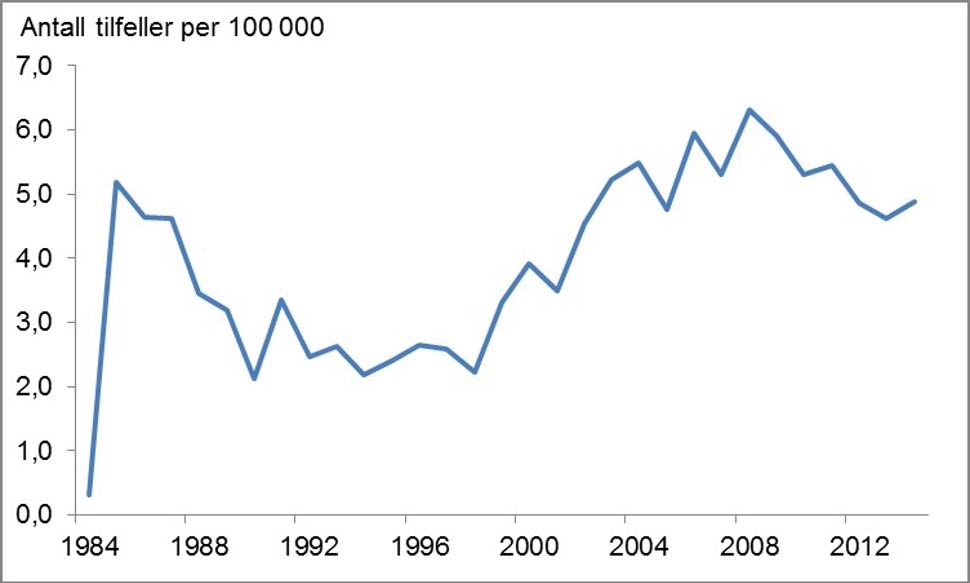HIV situation in Norway in 2014
News
|Updated
This content is archived and will not be updated.

In 2014, there were 249 new cases of HIV diagnosed in Norway, a moderate increase from 2013. The increase is among men who have sex with men (MSM) and heterosexually-infected people living in Norway. The trend of fewer diagnosed cases of HIV infection continued among immigrants who were infected heterosexually before arrival in Norway.
This news article is older than 30 days and the information may be outdated
Go to the home page

|
| Illustration photo: colourbox.com |
Transmission route | Before 2010 | 2010 | 2011 | 2012 | 2013 | 2014 | Total | % |
Heterosexual | 2229 | 157 | 155 | 142 | 124 | 130 | 2937 | 52.2 |
- infected while living in Norway | 691 | 57 | 46 | 46 | 31 | 47 | 918 | |
- infected before arrival in Norway | 1538 | 100 | 109 | 96 | 93 | 83 | 2019 | |
Homosexual | 1369 | 85 | 97 | 76 | 98 | 107 | 1832 | 32.6 |
Injecting drug use | 564 | 11 | 10 | 11 | 8 | 7 | 611 | 10.9 |
Via blood / blood products | 47 | 0 | 0 | 0 | 0 | 1 | 48 | 0.9 |
From mother to child | 63 | 1 | 4 | 7 | 1 | 3 | 79 | 1.3 |
Other / Unknown | 99 | 4 | 2 | 6 | 3 | 1 | 115 | 2.1 |
Total | 4371 | 258 | 268 | 242 | 234 | 249 | 5622 | 100.0 |
MSM
107 cases of HIV among MSM were diagnosed in 2014, the highest number in any year among this group in Norway. However, the increase is due to homosexually-infected immigrants arriving in Norway and not because of an increase in new infections among MSM in Norway. Among MSM born in Norway, HIV figures have remained relatively stable over the last 10 years. The proportion of immigrant HIV positive MSM has been increasing in recent years. In 2014, MSM with a migrant background accounted for about 50 per cent of notified cases among MSM.
The most concerning HIV development in Norway over the last 10 years is among MSM, with a threefold increase in the number of reported HIV cases since the increase began in 2003 until today. A similar development is seen in many other western countries. This has resulted in a high HIV prevalence among MSM in some MSM communities, both at home and abroad, and a persistent high infection burden as a result. The infection burden among MSM is increased by a significant number of newly infected people with high viral loads who are not aware of their HIV status. The number of cases of gonorrhoea among MSM continued to increase in 2014 and the incidence of syphilis remained at a persistently high level, which also indicates unsafe sex among MSM both in Norway and on trips abroad.
In addition to increased condom use, early diagnosis is a prioritised goal in prevention. The importance of increased testing in this group is supported by the significant number of MSM that every year are diagnosed after they have developed AIDS or another advanced HIV disease. MSM should be offered regular examination for sexually transmitted infections when they are in contact with their doctor or other health services.Sexually active MSM are encouraged to have an annual check-up, and men with multiple partners should be tested even more frequently.

|
| Figure 1. Number of cases of HIV infection in Norway per 100 000 reported to MSIS 1984-2014 by year of diagnosis. |